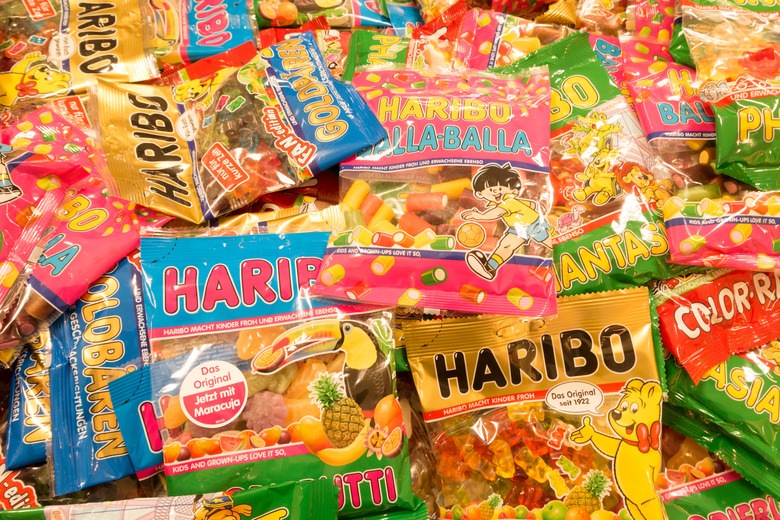5 Things You Didn't Know About Haribo Gummy Bears
Who doesn't love gummy bears? Those sticky, chewy little bear-shaped gelatin-based candies are one of the most popular treats around, and they come in a wide variety of flavors and colors. The top-selling gummy bear is produced by Haribo, which also happens to be the company that invented them! Here are five facts about Haribo's beloved Gold-Bears.
The Inventor's Name Is Hiding in Plain Sight
Hans Riegel, a confectioner from the German city of Bonn, invented the product in the 1920s shortly after founding his company, which he called Haribo. To get the name, he just took the first two letters of his name as well as his home city and combined them into one word.
Their Name Was Derived From the Original Main Ingredient
The "gummy" in gummy bear comes from the original thickener used by Riegel, gum arabic (the resin of an acacia tree). He called the product Gummibären, and the name stuck.
The Colors Don't Always Match the Flavors
In the United States, Haribo gummy bears come in five flavors: raspberry (red), orange (orange), strawberry (green), pineapple (colorless), and lemon (yellow).
They're Made in a Machine Called a Starch Mogul
To produce gummy bears, the design is carved into plaster by an artist, then duplicated in a tray filled with cornstarch called a starch mogul (the shape of the gummy is stamped into the starch first). The hot liquid is then poured into the molds, and after they set, the molds are turned out and the starch is recycled.
Halal Gummy Bears Are Produced in Turkey
Haribo uses animal-derived gelatin to make its gummy products, so in areas where pork can't be eaten they need to be made with bovine gelatin. In Turkey, there's a Haribo factory that does just this, making halal/kosher gummies. Some gummy bears are made with starch or pectin instead of gelatin, and so are suitable for vegetarians and vegans.
